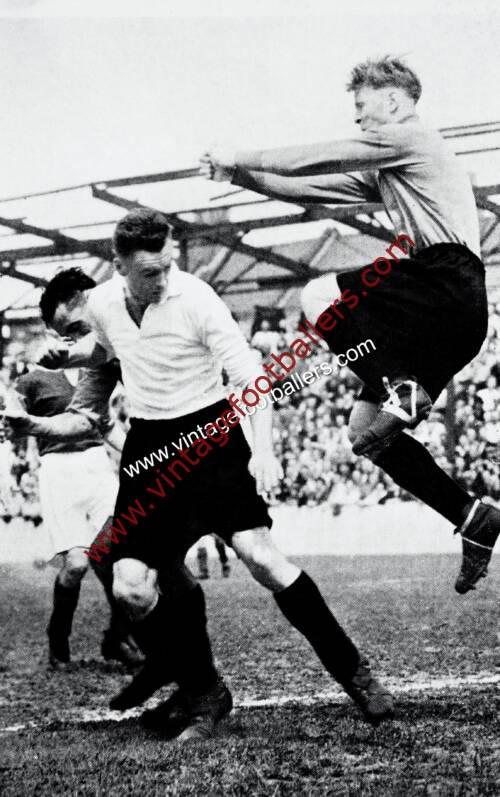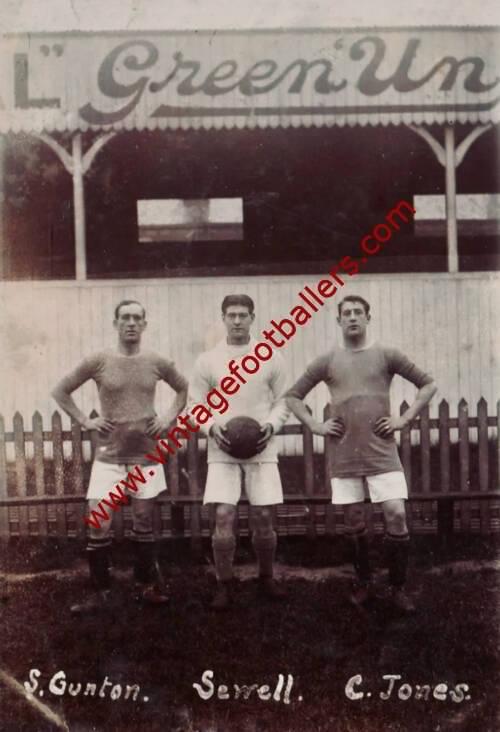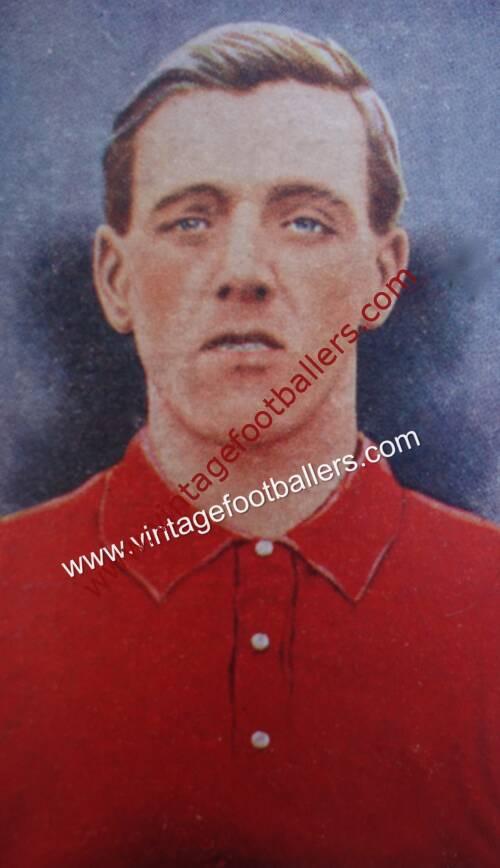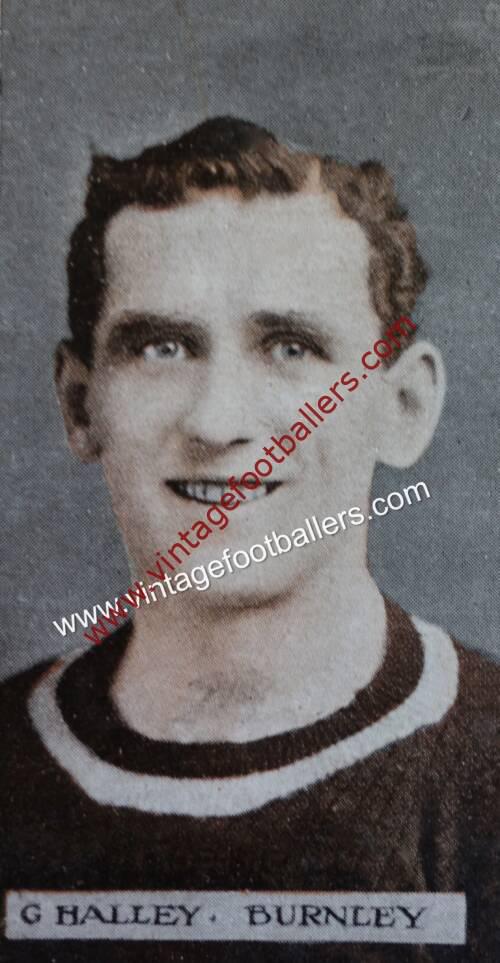Please choose your photo size from the drop down menu below.
If you wish your photo to be framed please select Yes.
Note: 16″x 20″not available in a frame.
Images can also be added to accessories. To order please follow these links
£8.95 – £49.95
Please choose your photo size from the drop down menu below.
If you wish your photo to be framed please select Yes.
Note: 16″x 20″not available in a frame.
Images can also be added to accessories. To order please follow these links
Corbridge, Northumberland born centre half Alan Brown started his football career with Corbridge United in 1930, and played for Spen Black & White in 1932 before being persuaded by his cousin Aussie Campbell, who was the captain of Huddersfield Town at the time, to join the club as a trainee in March 1933. He made his Football League debut at Liverpool in March 1935 making 60 appearances for the club before the intervention of the Second World War. After the War he joined Burnley in February 1946 already aged 32.
New Burnley manager Cliff Britton saw potential in Brown despite his advancing years. Brown was seen as a natural leader and was given the captaincy. In his first season at the club Brown formed what became known as the “Iron Curtain Defence” with fellow defenders Reg Attwell, George Bray, Arthur Woodruff, Harold Mather and goalkeeper Jimmy Strong. Burnley earned promotion from the Second Division at the first attempt, conceding just 29 goals along the way. This figure is still a club record low in a 42-game season, Brown having played in every one. The club also reached the FA Cup final in the same year, losing 1-0 to Charlton Athletic. Another good season followed in 1947-48 with Brown missing just six games and Burnley managing to finish third in the top division, with only goal average separating them from Manchester United in second place. The defence was again an integral part of Burnley’s success, conceding just 43 goals despite the change of division, with only champions Arsenal conceding fewer.
Ten games into the 1948-49 season Burnley accepted an offer in the region of £15,000 for Brown from Notts County. This was seen as a shock move by Burnley as Brown was still club captain and a first team regular, having made 98 appearances, although this was a huge amount of money at the time to recoup for a 34-year-old defender. His stay at Notts County was only short, however, and after just three months and 15 games, Brown retired from professional football.
Upon retiring from playing football Brown moved back to Burnley and opened a restaurant. After a few years he was persuaded by the then Secretary of the Football Association, Stanley Rous, to return to the game, and in 1951 he joined Sheffield Wednesday as a coach. After three-and-a-half seasons at Wednesday, Brown left to start a managerial career. In August 1954, Brown returned once more to Burnley when he was appointed as manager. His arrival back at the club was not well received by some of the senior players at Burnley who were unhappy in anticipation of being managed by such a figure of moral integrity. Undeterred by the potential backlash, Brown set about instilling in the club the same values of integrity, hard work and honesty that he held dear. He oversaw the development of a new training centre on the outskirts of the town, and as well as using paid labour, helped to dig out the ground himself. Brown also “volunteered” several of his players to help out, including big names such as Jimmy McIlroy and Jimmy Adamson.
Perhaps to compensate for his own poor treatment as a youngster, Brown – with the support of new chairman Bob Lord – developed a strong youth setup at Burnley which continued to be fruitful long after his departure. He also became known for his tactics and his pioneering use of short corners and huge array of free kick routines which were copied across the land. Brown kept Burnley in the top half of the First Division for three seasons but could not resist the opportunity to move back to the North East and manage his boyhood club, and was appointed as manager of Sunderland in July 1957 at a time when the club was in the middle of a series of scandals over illegal payments to players and was struggling at the bottom of the First Division table. Brown saw the appointment as an opportunity to “clean up” the club that he had supported as a child. At a time when paying young players’ parents bribe money to sign for a particular club was commonplace, Brown refused to do so:
“On two occasions parents have said to me, when I came to the point of signing their lads, “Well, what about a bit of so and so?” My reply was, “Look, you can take your boy home if you like, but you won’t get anything illegal here.” Then they said, “Well, what about a suit of clothes for the lad?” I replied, “If and when he goes abroad with us he’ll get his blazer and flannels like everybody else.” – Alan Brown, 1968”. Despite Brown’s arrival, Sunderland were relegated at the end of his first season at Roker Park. Over the following years Brown gradually turned the club’s fortunes around whilst simultaneously clearing out the corruption. The club finally earned promotion back to the First Division in the 1963-64 season, however Brown shocked the fans when he quit the club at the end of the season.
In August 1964 Brown was lured to Sheffield Wednesday, and Hillsborough Stadium, which was at the time the “most sumptuously-appointed stadium in the land”, before the start of the 1964-65 season. The board had specifically targeted Brown with the aim of cleaning up the club in the wake of the match fixing scandal that had recently affected the Owls. Brown was well respected amongst the players and quickly restored pride in the club. Brown led the club to the FA Cup Final in 1966, their first Final in over 30 years. Wednesday met Everton in the Final, who had made it there without conceding a goal whilst Wednesday had won every match away from home on the first attempt. Wednesday dominated for the first hour of the game going in to a 2-0 lead, but Everton mounted a comeback and went on to win the match 3-2. The game is widely regarded as one of the best finals to be held at the old Wembley. Brown remained at the club until February 1968 at which point he rejoined Sunderland. Brown was relegated with Sunderland again in the 1969-70 season, and after two failed attempts to regain promotion he was sacked in November 1972. Brown spent time coaching in Norway and assisting at Plymouth Argyle before retiring from the game.
Brown was a cousin of the England international footballer Austen Campbell, who played as a half back for Huddersfield Town and Blackburn Rovers.
| Weight | N/A |
|---|





